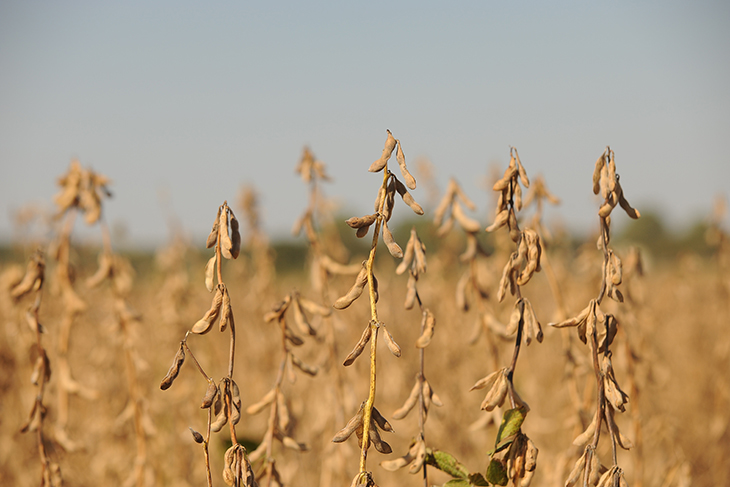
Funds available for some agricultural producers to offset market disruption from tariffs
Saturday, September 1, 2018
As of Sept. 4, farmers and ranchers have an opportunity to receive a Market Facilitation Program payment to offset losses incurred as a result of reduced exports associated with retaliatory tariffs.
The MFP payment is one of three mechanisms cited when the U.S. Department of Agriculture announced in July that $12 billion in Commodity Credit Corporation funds would be distributed to offset market disruption losses. The MFP is a direct payment to producers that is administered by the USDA’s Farm Service Agency.
“Payments are tied to 2018 production rather than market prices, so agricultural producers will need to have their 2018 crop acreage report on file with FSA for corn, cotton, sorghum, soybeans and wheat,” said Amy Hagerman, assistant professor of agricultural and food policy with Oklahoma State University’s Division of Agricultural Sciences and Natural Resources.
Dairy and hog producers will need to provide production records. These may include but are not limited to breeding records, inventory records, sales receipts, rendering receipts or veterinary records. Dairy payments will be based on historical production reported for the Margin Protection Program for Dairy. Payments for hog production will be based on live inventory as of Aug. 1.
“Producers who need assistance in determining what kind of production records are accepted should contact their local FSA office,” Hagerman said. “As with other federal programs, producers will need to have an ownership investment in the commodity and be actively engaged in farming or ranching; have an adjusted gross income of less than $900,000 per year for tax years 2014, 2015 and 2016; and comply with conservation compliance provisions.”
Agricultural producers may apply for the MFP from Sept. 4, 2018 through Jan. 15, 2019.
A payment will be issued on the first 50 percent of the producer’s total production
for 2018. Initial payment rates published by the FSA – estimated to result in total
payments up to $4.6 billion – are:
● Corn, 1 cent per bushel;
● Cotton, extra-long staple and upland, 6 cents per pound:
● Sorghum, 86 cents per bushel;
● Soybeans, $1.65 per bushel;
● Wheat, 14 cents per bushel;
● Dairy, 12 cents per hundredweight; and
● Hogs, $8 per head.
For example, an eligible Oklahoma wheat producer who yielded 25 bushels per acre on 1,000 acres in 2018 – 25,000 bushels of wheat production – may receive a MFP payment of $1,750 based on the first 50 percent of the 25,000 bushels at 14 cents per bushel.
“Payment caps apply to an individual or legal entity but are separate from other federal programs,” Hagerman said. “An individual or legal entity will be capped at a combined $125,000 for MFP payments on all crops combined, and $125,000 for dairy and hog production combined.”
In short, producers who raise both crops and hogs in Oklahoma could receive a payment on their combined MFP-covered crops and still be eligible for a payment on their hog production, under a separate cap.
“USDA officials will decide whether or not a second payment on the remaining 50 percent of production will be issued out of the original $12 billion on or about Dec. 3,” Hagerman said. “Details and payment rates on MFP and the other two mechanisms were provided by USDA officials on Aug. 27.”
The second mechanism is a Food Purchase and Distribution Program administered by the USDA’s Agricultural Marketing Service that will purchase up to $1.2 billion in 29 commodity groups and distribute the purchased commodities through nutrition assistance programs.
“This includes up to $558.8 million in pork and up to $14.8 million in beef,” Hagerman said.
The third mechanism is an Agricultural Trade Promotion Program administered by the USDA’s Foreign Agricultural Service that will allocate up to $200 million to develop additional foreign markets.
MFP applications are available online at http://www.farmers.gov/MFP. Applications can be completed at a local FSA office or submitted electronically by scanning, emailing or faxing. Producers can locate their nearest FSA office online by visiting http://www.farmers.gov.
